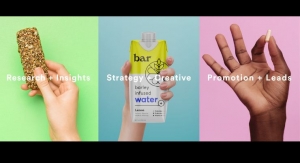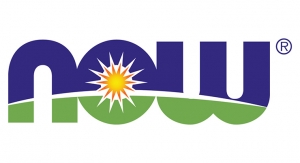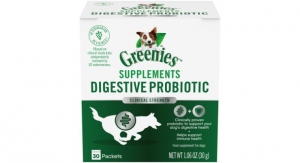L. Phillips Brown03.01.10
In spite of rising unemployment and reduced discretionary spending, sales of pet products continue to grow by leaps and bounds, with consumers spending $53 billion in 2009, up 5% over 2008, according to Packaged Facts, a division of MarketResearch.com.
Similarly, according to Mintel, sales of veterinary services rose almost 10%, followed by pet food (5%), non-food supplies (4%) and other pet services (4%). The Mintel report also noted that pet food and supplies alone grew to almost $25 billion, up 34% from 2002.
The Nielsen Company reports that pet owners spend $47 per visit at retail whereas non-pet owning shoppers spend $37 per trip.
There is no doubt that sales growth of this category is reflective of the emotional and personal roles pets play in the average family, even in a slow economy. Owners are willing to reduce spending on other household and leisure items so their “best friends” can continue to enjoy high quality pet products. In fact, in August 2009 the American Pet Products Association (APPA) asked nearly 21,000 pet owners nationwide if the current economy has influenced their pet ownership in any way. Seventy percent of pet owners responded, saying that the current economic situation has had little negative impact on their decision to own a pet.
• Over 80% of pet owners reported that they have not changed their spending patterns and continue to spend the same on their pet during these times.
• 62% of horse owners, one of the most costly pets to maintain, reported that the economy has not influenced their pet ownership, with 5% of them spending more during this same time.
• 57% of households with income less than $25,000 and 67% of households with income between $25,000 and $50,000 reported that ownership levels have remained unchanged despite the economy.
The fondness for pets was reinforced by a Lifetime Networks survey last year, which reported that 89% of women indicated they will spend the same amount or more on their pets in the next 12 months, while 24% plan on spending more money. The survey also revealed that 28% of women put the needs of their pets ahead of their own. And perhaps not surprisingly, given a choice between human or animal companionship on a deserted island, 13% opted for their pet and 30% said their pet was a better listener.
Pet Supplement Trends
Pet supplements account for half of U.S. animal nutrition sales and grew more than 7% percent to $1.4 billion in 2008, adding $98 million in new sales, according to Nutrition Business Journal (NBJ), Boulder, CO, in an August 2009 issue devoted entirely to the U.S. animal nutrition industry. In contrast, sales of human dietary supplements only increased 6%, NBJ reported.
Pet supplement sales are expected to increase 39% during the next five years, reaching $1.7 billion by 2012, according to a new study by Packaged Facts. The study showed that 33% of dog-owning households (12.5 million) and 24% of cat-owning households (6.7 million) fed supplements and functional treats, reflecting significant penetration rates as well as a diverse consumer base.
Current market trends have been sustained mainly through sales of supplements and functional treats in pet specialty shops, which account for more than one-third of sales. The remaining 57% of sales are divided among veterinary offices, health and natural food stores and mass-market outlets, including online retailers. Club, drug, grocery and mass merchandisers welcome the add-on business that animal products bring and are increasingly integrating more supplements into their pet sections, as they come to the realization that 63% of their current customers own pets and recognize the benefits of supplementation.
Pet supplement sales are motivated by: rising animal healthcare costs; increasing humanization of animals; growing interest in natural and organic products; aging pet population; steady influx of new products; increasing acceptance of pet supplements by the veterinary community; and the willingness of pet owners to provide the “best” for their furry friends.
A Crowded Category. As interest in pet supplements expands, the entire category is becoming more crowded. Established companies are adding new items to their existing lines, and companies new to the category are introducing novel products. Unfortunately, too many pet supplements, many of which serve the same purpose, can confuse and overwhelm a pet owner, leading to shopping paralysis. But help may be on its way, at least in food, drug and mass stores. Retailers nationwide are trimming their selections—Walgreens and Rite-Aid are eliminating nearly 5000 shampoos, and Kroger has cut its cereal selection by 30%. Even Wal-Mart has cut its hardware and toy selections. If sellers of pet supplements follow this trend of reducing product selections, pet owners may soon face fewer options on store shelves, and be better able to make faster decisions and have a more enjoyable shopping experience.
Pet specialty retailers have already begun to differentiate product functionality and better educate pet owners. Shelf space has been optimized by reducing SKUs as well as allocating more space to recognized brand leaders. Fine-tuning inventory has minimized redundancy within categories and emptied shelves of products that mimic functionality. Items not selling well nor receiving positive feedback have been eliminated, and shelves are being bulked up with solid, good movers that increase profits from both higher sales and reduced inventory costs. The result has been increased customer satisfaction and higher sales.
What’s Hot. Pets are living longer. In fact, according to the American Veterinary Medical Association, 44% of dogs are older than six years, while in 1987 only 32% lived to this age. For cats, 44% lived more than six years compared to 28% in 1987. This aging pet population, combined with owners’ appreciation of pet supplements has created a demand for natural supplements that can fine-tune pets’ physiological needs. Glucosamine, chondroitin, omega fatty acids and antioxidants continue to be in highest demand by pet owners bent on keeping their animals healthy.
Maintaining Healthy Joint Function. Joint products, which often target senior pets, represent 30% of dog supplement sales and 17% in cats. Osteoarthritis affects up to 20% of dogs over 1 year of age, according to the American Veterinary Medical Association. Key joint health ingredients include glucosamine and chondroitin (alone or in combination), methylsulfonylmethane (MSM), green-lipped mussel (Perna canaliculus), hyaluronic acid (HA) and collagen type II. Capsaicin, boswellia, yucca and omega 3 fatty acids are also formulated into joint support products for their anti-inflammatory properties.
Supporting Skin and Coat Health. Skin and coat supplements represent 21% of supplement sales in dogs and 22% in cats. Most pet foods supply ample omega 6 fatty acids, but not enough omega 3 fatty acids. Fish oil or other marine sources contain high levels of EPA and DHA, omega 3 fatty acids capable of modifying inflammatory skin responses. Wild, non-farm raised Alaskan salmon oil from sustainable resources is an excellent source of biologically available omega 3 fatty acids.
Vitamin and Mineral Support. Although sales of general pet one-a-day multivitamins are declining, they still represent 24% of sales in dogs and 29% of cat supplement sales. However, there are increasing numbers of formulas that combine condition-specific ingredients with antioxidant vitamins and minerals to promote immune health and overall vitality.
Maintaining Digestive Health. As human studies validate that solid intestinal health may bolster longevity, pet owners recognize the importance of a balanced GI flora in their own animals. Probiotics are live microorganisms that help normalize and maintain the balance of the intestinal flora. Prebiotic fibers, such as inulin and oligofructose, have been linked to improved digestive health, overall function and immunity. Plant-based enzymes help replace naturally occurring enzymes destroyed during food processing and are particularly useful for animals with pancreatic dysfunctions, digestive problems such as gas, stool-eating and vomiting, as well as allergies, shedding and immune disorders.
Promoting Thinking and Memory. Dogs and cats may experience a certain loss of higher level functions of memory and cognition as they age. It is estimated that cognitive disorders affect 10 to 15 million cats and dogs in the U.S. Key brain health ingredients include phosphatidylserine, phosphatidylcholine, inositol, omega 3 fatty acids from fish oil, particularly EPA and DHA, antioxidant vitamins A, C and E, copper, zinc and selenium.
Stress and Anxiety. Dogs are social animals that if left alone, may exhibit undesirable behaviors associated with stress, fear and anxiety, such as restlessness, excessive whining and barking, and adult destructive chewing and house soiling. Herbs, essential oils and natural pheromones can be helpful for reducing nervousness, anxiety and motion sickness.
Maintaining Eye Health. Older animals are at risk of developing senile cataracts, the leading cause of low vision among older dogs and, very rarely, cats. The carotenoids lutein and zeaxanthin, vitamin E, lycopene, antioxidant vitamins C and E, zinc, flavonoids such as bilberry, black currant, green tea, French Maritime pine bark extract and omega 3 fatty acids DHA and EPA are beneficial as “vision support” supplements.
Current Pet Supplement Regulations
The Dietary Supplement Health and Education Act (DSHEA) excluded pet supplements when it was created in 1994. Instead, animal supplements are categorized as either “animal feeds” regulated at the state level by the Association of Animal Feed Control Officials (AAFCO) or “animal drugs” subject to FDA’s Center for Veterinary Medicine (FDA/CVM). The National Animal Supplement Council (NASC), a self regulating industry group of pet supplement companies, has worked closely with both state and federal regulatory agencies to help ensure that animal supplements remain available by creating guidelines for labels, good manufacturing practices (GMPs), adverse event reporting systems (AERs), independent audits for member companies, as well as science-based oversight of laboratory methodologies, finished products and ingredients.
The NASC has a joint initiative with FDA/CVM to have all NASC members registered with the FDA and assigned facility ID numbers and labeler codes by the end of 2010. This will provide FDA with an immediate point of contact if any issues arise—such as the recall from melamine-tainted wheat gluten in 2007. The NASC is working diligently toward having all members up to speed with the new cGMP guidelines for animal products that are very similar to those required for human dietary supplement companies under 21 CFR part 111.
FDA prevents label statements about therapeutic efficacy and ingredient quality. As a result, owners often have difficulty finding a supplement that readily addresses their pet’s particular needs because labels often present confusing, conflicting or even misleading information. For now, consumers should rely on the presence of the NASC Seal of Approval on pet supplement labels because it provides assurance that these products are supported by a science-based system that promotes animal health and provides for reasonable, nationally consistent labeling. Only member companies that successfully complete an independent audit can display the NASC Seal of Approval on their labels and literature.
Although supplements cannot replace a wholesome, well-balanced feeding regime, they do serve to help fine-tune nutritional needs and address specific conditions that could potentially reduce pet well-being and vigor. People that use supplements themselves recognize that such products benefit the health of their animals by maintaining healthy immune systems, reducing negative effects of stress, supporting normal healthy joint function and coat condition and even keeping animals calm and relaxed. Natural pet supplements have fewer side effects than prescription medications and have finally become an acceptable component of veterinary care.
Pet Food Developments
According to Packaged Facts, sales of dog and cat foods in the U.S. reached $18 million in 2009, with a market share of 34%. However, the industry’s growth rate is definitely slowing, with this year’s global growth just .6% over 2008. Retail shelves continue to display new forms and varieties of pets foods marketed to provide everything that a dog or cat would require for a healthful, fruitful life, especially as large players in consumer packaged goods steadily increase their presence. Interestingly, almost 80% of pet foods are produced by human food companies, including Nestle (Purina PetCare), Mars, Del Monte Foods, Colgate-Palmolive (Hill’s) and Proctor & Gamble (Iams).
The key driver of this segment is the development of pet foods with the main purpose of looking and feeling like food for humans. There is a vast array of marketing descriptions created to reinforce and strengthen the humanization of pet foods and, of course, sell more products. Here are some examples:
Human-inspired applications-Woofy Pop Popcorn Dog Treats
Humanized-Nestle Purina Chef Michael’s Canine Creations Dog Food
Seasonal foods-Merrick Venison Holiday Stew with Vegetables and Red Apples
Wholesome, healthy and balanced-Canidae Lamb and Rice Formula
Holistic-Blue Buffalo Company Chicken & Brown Rice Recipe
Natural-Eukanuba Naturally Wild Country-Grown Turkey & Multigrain
Organic-Newman’s Own Organics Dog and Cat Foods
Ingredient origin-Nutri-Vet Wild Alaskan Salmon Puffs
Allergen-free-Natural Balance Limited Ingredient Diets Potato & Duck
Functional-Wellness Core Dry Original Grain-Free, Protein-Focused Food
Vegetarian-Pet Guard Organic Vegetarian Pet Food
Segmentation by age-Hill’s Science Diet Mature Adult 7+ Cat Foods
Segmentation by breed-Royal Canin MINI Yorkshire Dog Food
Segmentation by size-NutroMax Natural Choice Large Breed Puppy
Frozen-Freshpet Dog Food Rolls
Premium ingredients-Three Dog Bakery Entrée for Dogs (Natural Meals with Chicken, Carrots, Green Beans and Rice)
Companies are emphasizing safety, science, ingredient quality and traceability rather than just flashy packaging, flavor extensions and segmentation. There is also an increasing focus on sustainability in packaging, ingredient sourcing and even retrofitting sustainable facilities. Canidae Pet Food now manufactures biscuits and treats using electricity generated by wind; Cardinal Laboratories pet foods and treats are produced in a solar-powered facility; Mars Petcare opened a LEED gold-certified plant; Nestle Purina has begun pilot solar energy programs in several U.S. plants, and Novus International’s new global headquarters is LEED platinum-certified.
Pet food companies regularly promote the benefits of functional ingredients, such as glucosamine, chondroitin, L-carnitine and prebiotics. However, many of these “actives” are not approved by AAFCO and CVM for use in pet foods, but are accepted under “regulatory discretion.” Some worry that these ingredients may be affected by cooking or that they are not formulated into the finished food at efficacious levels. With the rise of human functional foods, promoting system-targeted functionality in pet foods is catching shoppers’ attention and is a concern to pet supplement manufacturers and marketers.
There is a change happening where pet food is purchased, with convenience and a recessionary economy serving as prime drivers. A recent survey by The Pet Aisle found that 80% of shoppers regularly purchase pet food at mass-market outlets, with more than 64% buying premium foods in discount stores and supermarkets. Twenty-five percent of consumers were motivated because they believed they were saving more than 20% over shopping at pet specialty stores; 18% felt that Petsmart and Petco offered the best pricing.
Keep Business Alive and Well
Shoppers will continue to purchase nourishing pet foods and well-designed
supplements to keep their dogs and cats vital and disease-free. Even during the recent recession pet owners found ways to maintain the health of their animals without draining their bank accounts. Shoppers will continue to look to retailers to help them purchase responsibly, not frivolously, and buy products from companies that provide ingredient traceability, research that documents health benefits and information that makes them stand out. An aging pet population predicts the need for more specialized products that can address health issues such as joint and back maladies, heart disease, cataracts, gum disease, diabetes and obesity.
Education is the key to selling pet products. Pet specialty and natural product retailers must continue to educate their customers and watch price points to compete with mass retailers. In a 2009 Pet Aisle survey, 65% felt that mass retailers do “an average or poor job servicing the section,” and only 10% felt these stores did an adequate job. Spending time with owners of new puppies and kittens, talking to those with adult pets and providing counseling to owners of older animals will help build strong customer bonds. Armed with product knowledge, movement data and creative promotions, retailers can better serve customers by understanding completely which products promote animal well-being and longevity.
About the author: Dr. L. Phillips Brown holds a Doctorate Degree in Veterinary Medicine (DVM) from the University of California at Davis and a Master of Science Degree in Animal Science and Bachelor of Science Degree in Animal Physiology from the University of California. He is senior vice president of marketing and regulatory affairs at Nutri-Vet Animal Health Care Products, veterinary consultant to Newman’s Own Organics, veterinary advisor to The Bradford Group, Past President of the Yavapai Humane Society Board of Directors, former member of the Board of Directors of Prescott College and member of the American Veterinary Medical Association and National Animal Supplement Council. He writes and lectures frequently on the benefits of supplements for animals and lives in Idaho with his wife, two cats and an Afghan hound. He can be reached at pbrowndvm@nutri-vet.com.

























